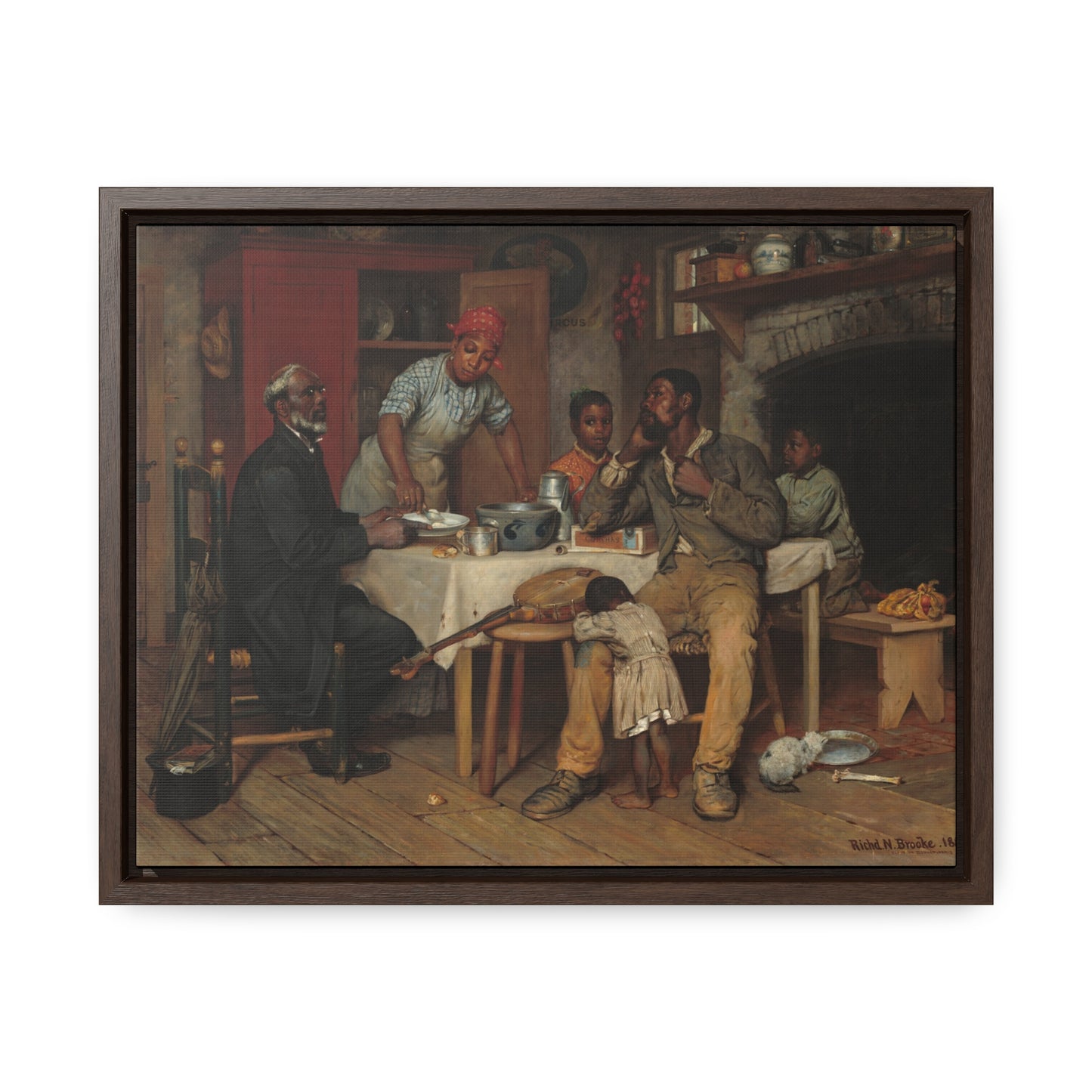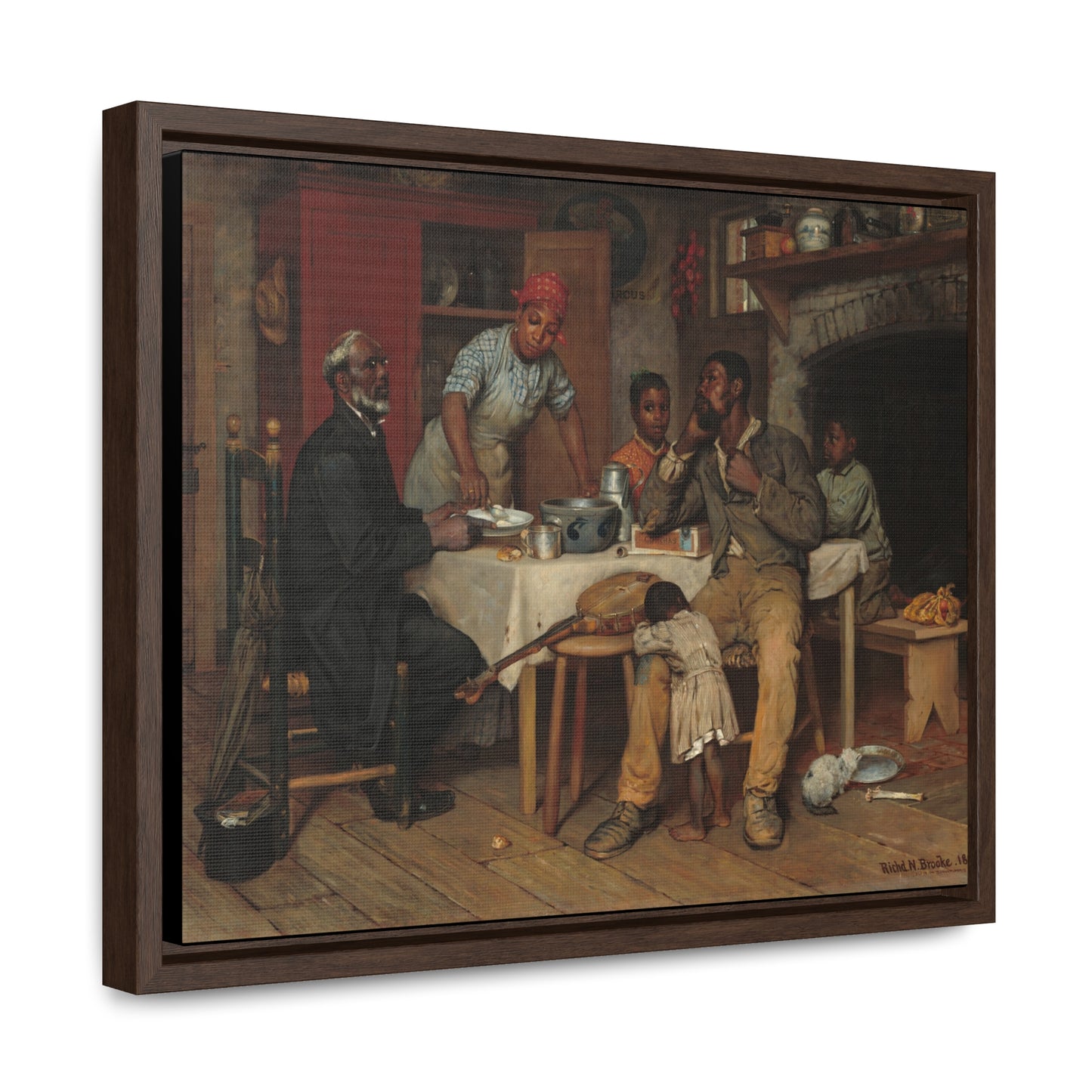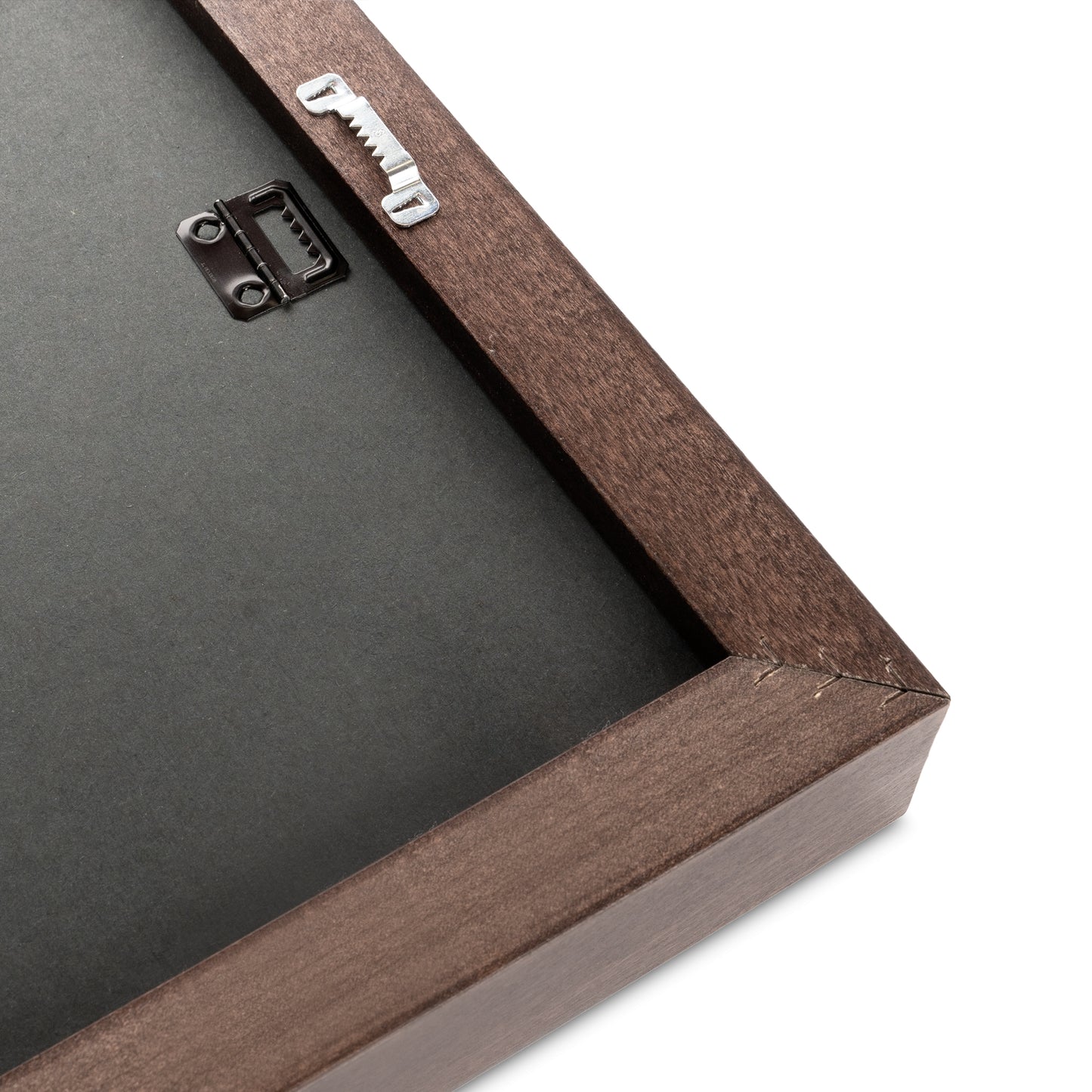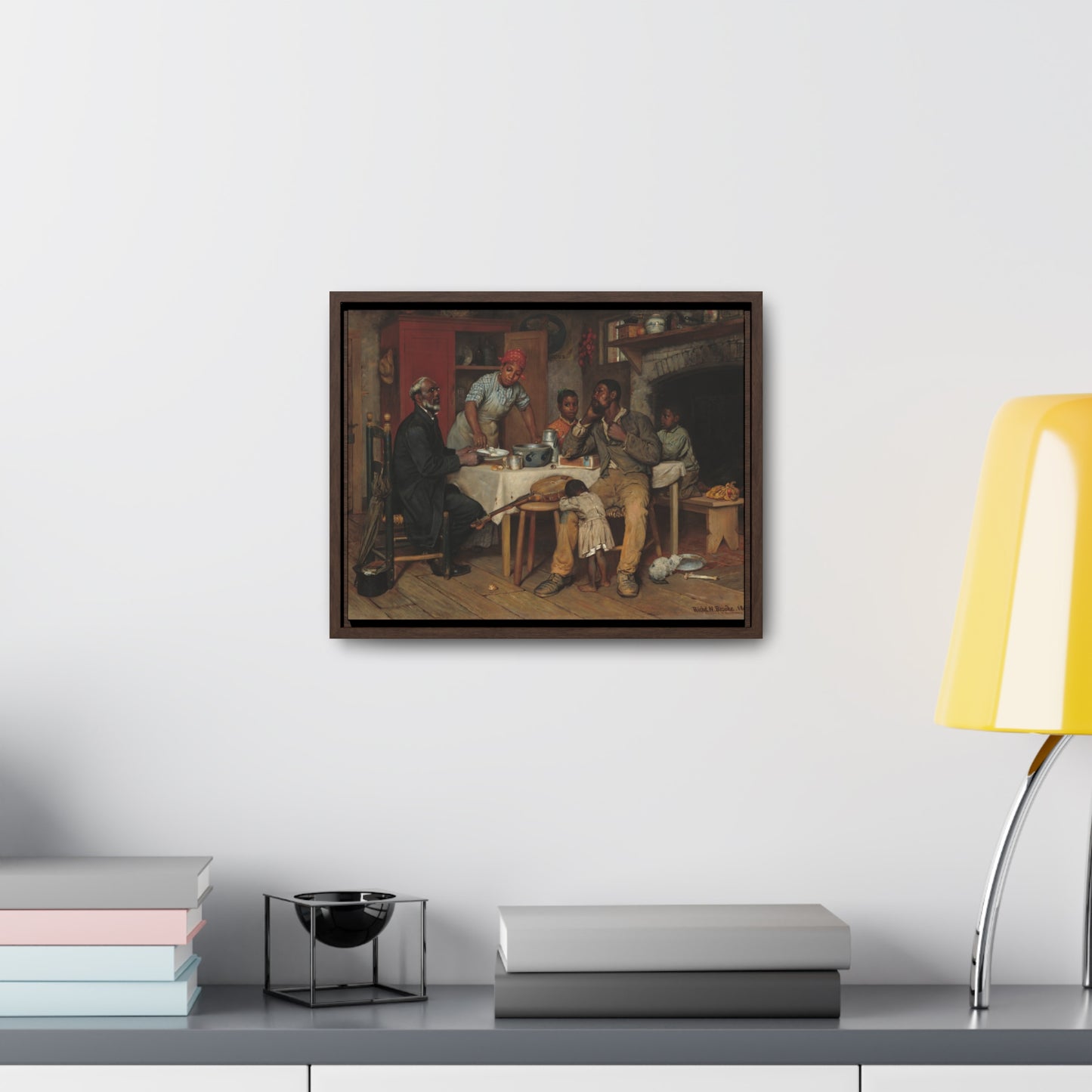Printify
A Pastoral Visit in 1881 ( Framed Print)
A Pastoral Visit in 1881 ( Framed Print)
Couldn't load pickup availability
High-quality print of this beautiful painting by artist Richard Norris Brooke..
A Pastoral Visit, the most celebrated of Richard Norris Brooke’s genre scenes, or views of everyday life, depicts a family welcoming their elderly pastor to Sunday dinner—a frequent occurrence in both black and white rural parishes that could not afford parsonages. According to tradition, the pastor is served first and, following the meal, he will be presented with both the cigar box containing the congregation’s weekly contribution (duly protected by the family patriarch) and the cloth-wrapped fruit at right. The banjo, prominently placed at the center of the composition symbolizing its importance in African American culture, may indicate an after-dinner musical interlude.
The family’s home, rustic but comfortable, features a sturdy cupboard housing pottery and glass and brick fireplace on whose mantel are neatly arranged a coffee grinder, a ginger jar, and clothes irons. Decorating the corner near a damaged window are a circus poster and a string of dried chilies. Brooke had ample opportunity to study the interior depicted; it was located in a residence near his home in Warrenton, Virginia, where he painted the canvas. Likewise, the features of the figures resulted from the artist’s use of his Warrenton neighbors as models: George Washington, Georgianna Weeks, and Daniel Brown.
Brooke was one of many artists to depict African American life in the 1870s and 1880s, inspired by the dramatic social change during Reconstruction, when blacks achieved citizenship, voting rights, and protection under the Constitution. Unlike many of his peers, he portrayed his subjects with a degree of humanity and dignity rare in contemporary depictions of African Americans. In his letter offering the painting to the Corcoran Gallery of Art for purchase, Brooke criticized such renderings as “works of flimsy treatment and vulgar exaggeration.” He also referenced his recent French academic training, stating that he wished to elevate his rural subject “to that plane of sober and truthful treatment which ... has dignified the Peasant subjects of [his French contemporary] Jules Breton, and should characterize every work of art.”
In 1881, Brooke relocated from Warrenton to a well-known Washington studio building, Vernon Row, just east of the White House. There, he exhibited the painting and arranged for its loan and subsequent sale to the Corcoran. Active in almost every local arts organization of the day, the successful artist served as vice principal at the Corcoran School of Art from 1902 to 1918 and exhibited extensively at that institution. For reasons not entirely understood, soon after completing A Pastoral Visit he devoted himself almost entirely to landscape painting.
.: 100% Cotton fabric
.: Recycled plastic frame
.: High image quality and detail
.: For indoor use
Share







